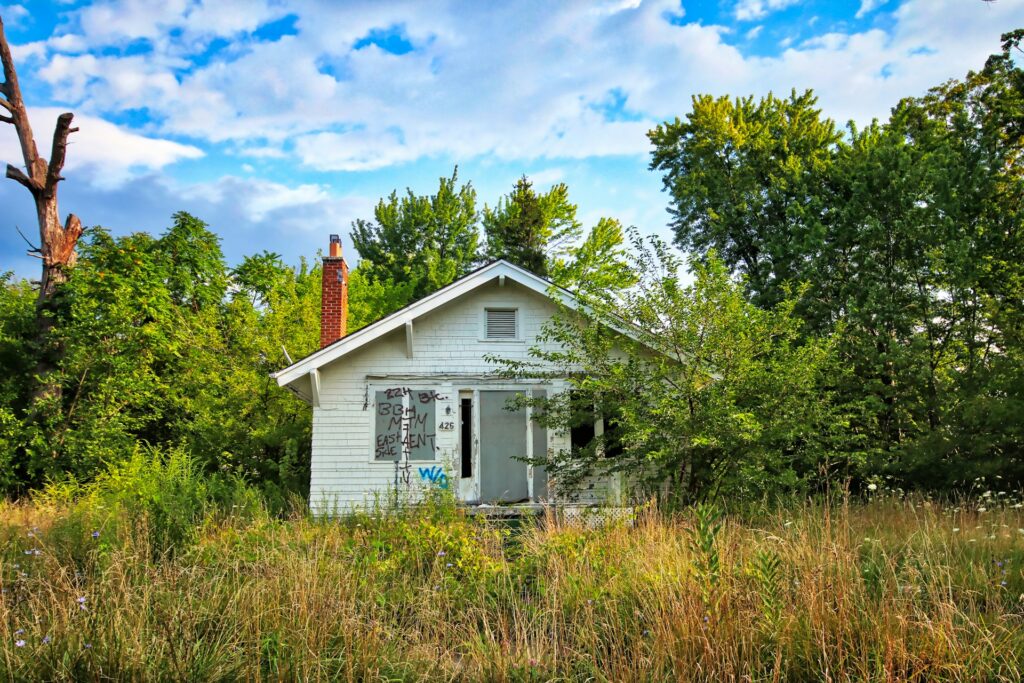Connecting the Dots: How National Policy Leaves Damage at the Local Level

We attended a neighborhood association (NA) meeting recently on the inner west side. The concerns were probably not unlike those of residents in other U.S. urban centers: crime, public intoxication, vagrancy, etc.
One that drew a notable response from District 5 Councilwoman Teri Castillo was the cost of housing. This issue provides a good example of how actions of the federal government trickle down and leave collateral damage in our neighborhoods.
Housing is a basic good, susceptible to normal market fluctuations just like any other. When government intervenes though, things get a little more volatile.
Out in California, regulations are stifling the addition of more. Rent controls do the same. The overarching problem in every state for the last several years however, has been unstable monetary policy coming out of Washington D.C.
Since the dollar has been devalued, it has simply taken more to buy stuff. Plus, it has compelled more investors to enter the housing market. It’s a safer, less risky investment than an untested invention, or new product line.
This arguably explains the widening discrepancy between price growth and that of population.
This appreciation leaves homeowners with the illusion of greater wealth. When they look to ‘cash in’, they find that the market around them as moved up as well. Further burdened by rising interest rates, they hunker down, and the market for new homebuyers tightens.
This creates an opportunity for local officials to try to fix things.
When some of the residents complained about homes being turned into “quadplexes” (essentially makeshift apartments), Councilwoman Castillo was quick to point out the city’s “voter-approved investment in affordable housing” that can be found going up all over town.
One of these developments is going up on the far west side. Another is raising a stink on the far north side. Residents there complain of inevitable overcrowding in schools, increased traffic, etc.
There is also a perception that more criminal activity is likely to follow.
Even people who live in the more impoverished parts of town know they aren’t very safe areas. Many are anxious to get out. But they felt trapped, just like everyone else. Or almost everyone.
Those with the means can and do leave the city’s tax jurisdiction. Despite the county’s previously mentioned population growth, San Antonio’s population grew by only 26%. This is important because property taxes finance these bond “investments”.
That necessarily means the burden on the remaining homeowners intensifies. The city begins to entertain the possibility of raising rates. That in turn nudges the holdouts to join the exodus out of city limits, or to get on the long and growing waitlist for this “affordable housing.”
It’s a vicious cycle, and it looks like it might get worse before it gets better.
The Biden Administration has made it clear that Americans should expect the value of their dollar to drop further. Advisers to former President Trump are discussing their own ways to devalue the currency should they retake the White House in November.
Meanwhile, despite all this, their cohorts here at the grass roots are likely eligible for political promotion.
Councilwoman Castillo, endorsed by Bernie Sanders, who himself called on the Federal Reserve to lower interest rates earlier this year, could follow the path of former Austin city councilman Greg Casar into Congress.
While Mayor Ron Nirenberg, who spearheaded the drive for these “investments,” appears lately to have been groomed for a possible role in a second Biden Administration. Residents and community leaders we talk to are already not pleased about being left with his plodding workforce program.
For their part, local conservative officials haven’t been much help.
Falling in line with a growing number of their brethren in D.C., too frequently they have voted for higher property taxes. Nevertheless, they are blessed for re-election by lawmakers stationed thousands of miles away.
In some areas of town, homes are renting for twice as much as they did barely a decade ago. If landlords go too long without being able to find a tenant, investors will no doubt swoop in to buy.
If they struggle, something like a quadplex doesn’t fly with the neighbors, and the market collapses under the weight of a growing glut of apartments, it’s not a stretch to guess what comes next.
Bankruptcy and/or government bailouts. We all remember the fallout the last time that happened.